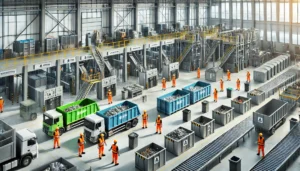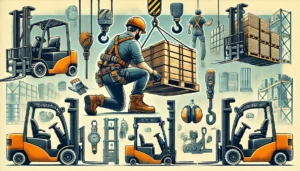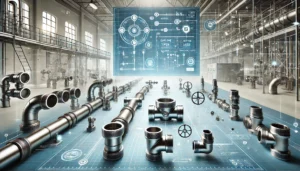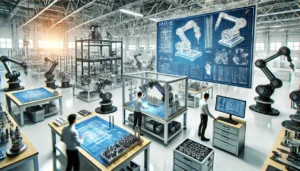Pipelines in process installation and industrial works require strong structural support for adequate and safe functioning. Among the many supporting structures designed for pipelines, pipe racks and pipe tracks, which are also referred to as pipe sleepers, are the most widely used. Although the two fulfill the same broad function of supporting pipes, they are however distinct in terms of their shape, orientation, and particular uses. It is very important to appreciate these differences specifically with regard to the design of the support system in order to cater for the specific characteristics of the facility to be supported.
What are Racks for Pipes?
Pipe racks are high structures made up of usually steel or concrete which aim at holding pipes and their auxiliary services at relatively a higher position from the ground. These structures are regularly used between major process unit of a plant with the objective of linking major devices like pumps, storage tanks, static vessels, and columns. And besides holding pipes, pipe racks also hold vents for steam, air, cooling water, inert gases, and relief or blow down header pipes to facilitate routing and ease of access.
Pipe racks are important components of pipeline corridors in the plants, as they make it possible to transport safely and in an orderly manner fluids and gases from one section of the facility to the other. Their height also makes it easier to maintain pipelines and shields them against ground threats. In order to make it economical with space, pipe racks are freestanding and horizontally supported so that the complex network of pipes in a refinery, chemical plant and other industrial establishments can be installed with ease.
There are two main types of pipe racks in use – the main pipe rack and the unit pipe rack. The Main Pipe Rack traverses the whole plant or facility as it is central in linking together different units and storage and utility areas. It provides a means through which various processes within the plant are material- handled. The Unit Pipe Rack, in contrast, is positioned within definite units and integrates different equipment in one unit. Both types of pipe racks help to enhance process effectiveness and safety by providing rangers and braces for pipelines.
What is a Pipe Rack or Pipe Sleeper?
Pipes are even of a great advantage if they can be elbowed and reticulated, and come in with pipes and are placed horizontally. These structures help in the mind of retaining some naturalistic appeal while also enabling the mind to have a better understanding of the grade level of the structure that uses the pipes. A clear depiction of the reason and purpose of the area is conveyed. Grade line pipes are commonly seventh in the leg of the structure if an individual wishes to get a deeper understanding of the matter.
The grade line structure is easy to understand. It is just the pipe that is dependent on the rack and has a flood level exceeding the height. These elevate around gulfs as the range around them is not very substantive. Pipe structures are adjusted to a certain height so that they do not lag in the other segments.
The ability to elbow and reticulate pipes is valuable, and these allow pipes to be covered horizontally. They are extremely simplistic in design and do leave a positive and empowering impression. From a deeper perspective, the zone which fluff and bias pipes are often quite clean. It is fastened in a way that does not jeopardize other structures on site dhexe.
Key Differences Between Pipe Racks and Pipe Tracks
Pipe racks and pipe supports have an objective of holding up pipelines but certain areas set them apart, their construction, location, and the purpose they serve. Pipe racks are structural steel or concrete frames at different levels that are designed to endow support for main process and utility lines. They help in the inter connections of machinery such as pumps, storage tanks and columns, and also provide space for headers and utility lines. Their elevating design best suits the interiors of plants especially where limitation of space and accessibility is of essence.
Pipe sleepers on the other hand, allow pipelines to be routed over long distances especially in OSBL areas, supporting pipelines that are at the same level. They are much simpler and cost effective since they do not necessitate the structural advancement that pipe racks do. Pipe supports are exclusively used for the support of pipelines vis-a-vis, pipe racks can be used to provide support to the pipelines and other ancillary apparatus and utilities. The evolution of pipe supports make them ideal for exposed locations or regions where there is no need for elevation.
Conclusion
Every industrial facility has two supporting elements correctly positioned within it – pipe racks and pipe sleepers. Yet, they differ in their design as well as their purpose. Within a plant, a pipe rack can be expected to be installed along the process and utility line since it has an elevated and multi-tiered structure. They also hold pipelines in a variety of other complex plant designs such as refineries and chemical plants, so that people working in a plant can easily reach out for these pipelines when required.
Otherwise, pipe sleepers assist in economically upholding the pipeline where there is no requirement of centering the structure such as in OSBL regions. They are simple and functional yet easily slide over a pipeline while moving it across stretches and dimensions with varying heights where critical regions are not a cause of concern. This also allows for the choice of a specific type of supporting structure depending on the surroundings which the industry deems right for increasing the safety and efficiency of the pipeline operations.
For designing a pipeline support system that will be well suited for its needs, it is important to have an understanding of the contrasts between the two most common pipeline supporting systems, pipe rack and pipe sleeper. Induskart provides a range of different industrial solutions from pipe racks and pipe sleep systems to other supporting materials. Get in touch with our experts at Induskart who will assist in tailoring the best-piped support systems for your business, allowing for construction that is more cost-effective.










